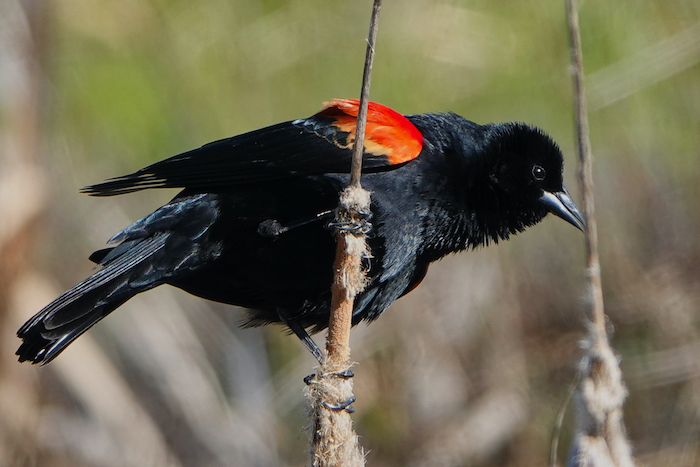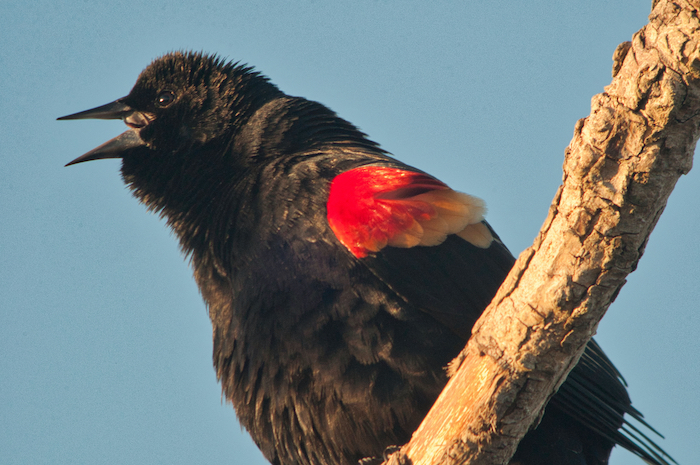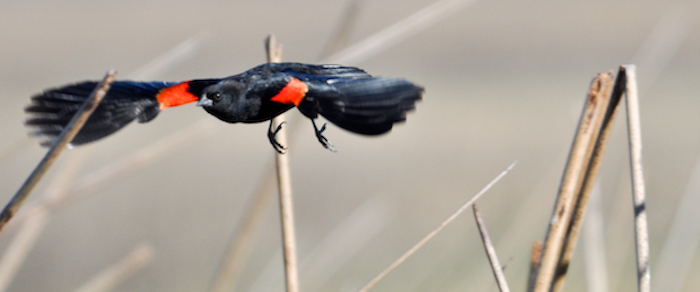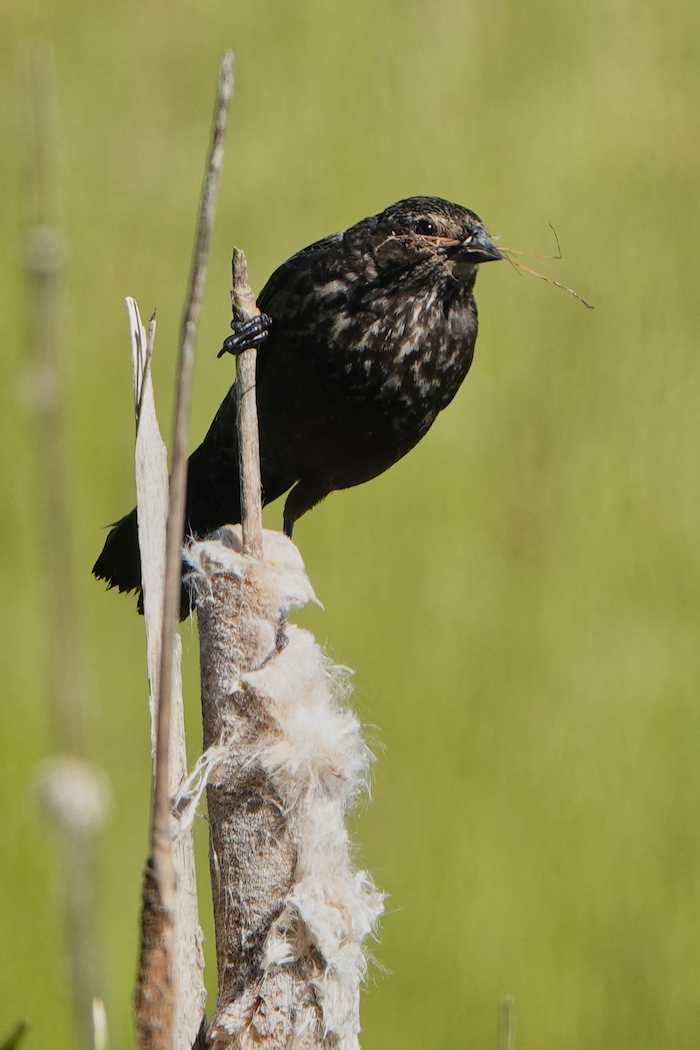
Red-winged Blackbird Male
Nearly anywhere in the US, and throughout most of North America, pick your springtime pond or marsh or ditch–any place with a stand of tules or cattails–and you are apt to see and hear red-winged blackbirds. The males perch boldly atop the reeds, their glossy black feathers adorned with large scarlet epaulets, usually fringed in yellow. They sing loudly, a pond-side staple often transcribed as conk-la-ree!
Throughout the winter they congregated in numbers that can reach into the millions, and created in the sky the flowing flocks that have been joined to grand and fluid classical music. Now, come spring, they spread over the nation’s shallow waters and ephemeral cattail patches, bring out their bright feathers, and unleash their song.

The males stake out their breeding territory with both vocals and aggressive policing, vigorously chasing encroaching males for much of each day. Successful males end up sprinkled over their reed-patch perhaps thirty feet apart. Each will breed with a handful of females, sometimes as many as fifteen, who will nest in his territory. For all his energy, however, they do not limit their breeding to this local lord of the manor. Studies indicate that 25%-50% of the young in his fiefdom are sired by different males–either a nearby turf-holder or some landless bird.

The local males marshal to drive off potential predators who wander too close to their nesting grounds, creating vigorous sorties that are thorough-going even if not always discerning. Objects of their harassment regularly include hawks, crows, cats, people, and even horses–anything, it seems of known danger or suspect unfamiliarity.

Red-winged Blackbird Female
For their part, the females maintain a lower profile. Their feathers are brown, with undersides heavily streaked. They build a cup nest low in the reeds, and there they incubate and feed 2-4 young birds, bringing hatchlings from blind and naked to flying in two weeks.

Being widespread, red-winged blackbirds have regional variation in their size and looks. Interestingly, when eggs are relocated to “foreign” variants, the young grow substantially into the forms of their adoptive parents. Regarding these in-species variations, environment seems to affect the growing birds more than their genetics.
